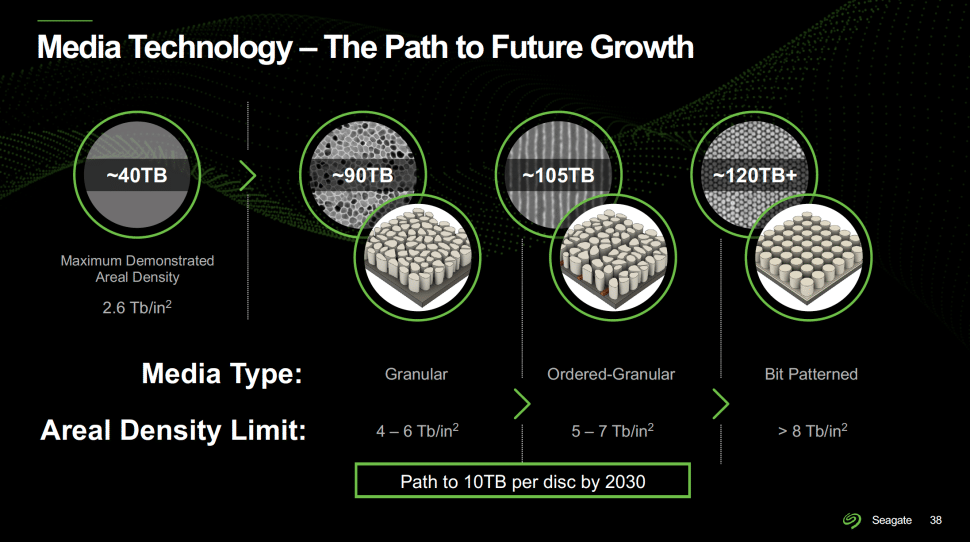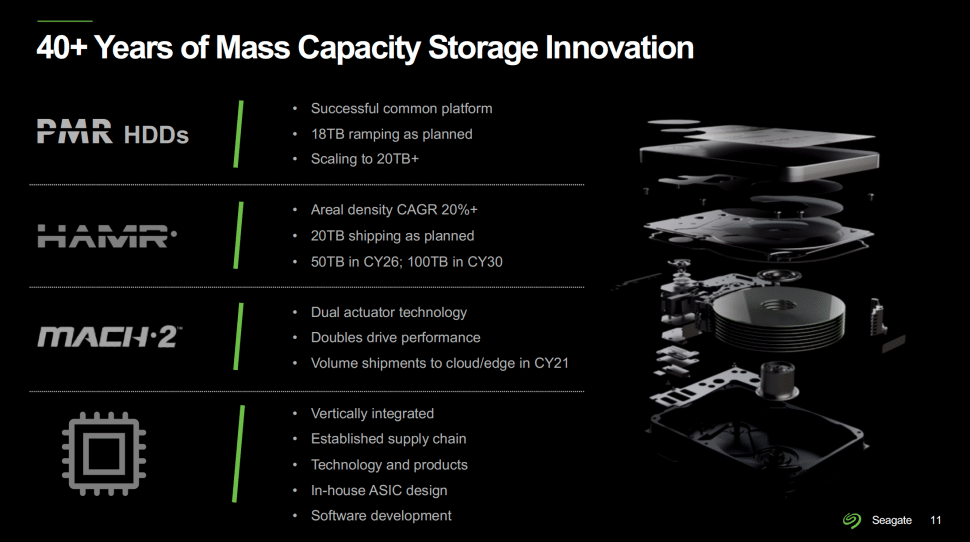HAMR technology used by Seagate for making hard drives will be more effective than today. It’s 2021 and the normal thing for a desktop PC is to have an SSD drive and maybe a 4, 8 TB or 12 TB hard drive. There are traditional drives up to 20TB, but those limits will be exceeded in a few years.
This is at least what Seagate claims, whose HAMR technology will allow 50TB drives to be launched on the market by 2026. That capacity will reach 100 TB in 2030, and shortly after they claim that they will reach 120 TB hard drives that will completely leave behind the capacities we handle today.
Hard drives to power

Seagate is already marketing 3.5-inch drives with a capacity of 20 TB that are based on HAMR (Heat-Assisted Magnetic Recording) technology. This system will allow the firm to increase the recording density on its turntables by 20% per year, which will result in units of increasing capacity.
Those responsible for the firm made it clear that PMR (Perpendicular Magnetic Recording) technology is reaching its limits and increases in capacity with units of this type are limited to an improvement of 1 or 2 TB in these units.” With HAMR technology, it will allow us to jump in steps of 4, 6 and even 10 TB in one go.
HAMR technology is important because it does seem to give room for maneuver for traditional hard drives to still make sense.
It will still take us to see units that, for example, reach 40 TB on the market – Western Digital has also pointed to this for a long time – and in fact the increase in density also implies changes in the type of media that is used.
From the current aluminum or glass dishes or discs with a nanogranular film, we will move on to dishes with special magnetic films with new compositions that allow us to reach those data recording densities that will reach higher than 8 terabits per square inch at the beginning of the next decade, when it is now around 1.3 Tbits per square inch.
This increased capacity will be accompanied by higher performance, something that will be achieved with a fairly simple method: increasing the number of read and write heads (“actuators”). Seagate is already developing its Mach.2 technology with two of these headers and has rolled it out on some experimental drives, but that is expected to be the norm in the future when 30TB drives become the standard.

Although the increase in capacity and actuators makes everything more complex and more expensive to produce, at Seagate they ensure that traditional hard drives will continue to offer a lower cost per gigabyte than what SSD drives offer. It therefore seems that the binomial between one and the other will continue to be a reality for a long time.
Via | Tom’s Hardware
